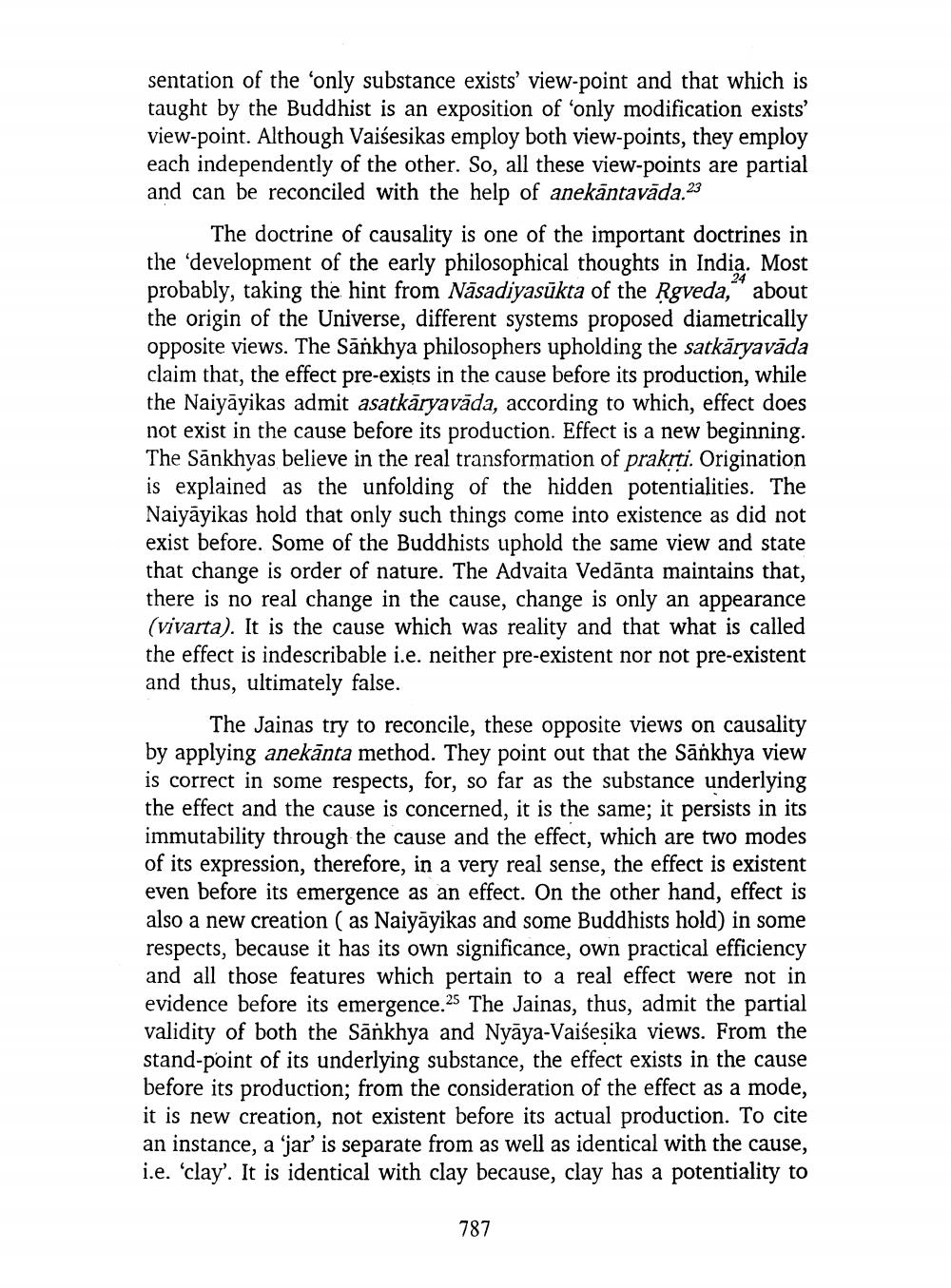________________
sentation of the ‘only substance exists' view-point and that which is taught by the Buddhist is an exposition of 'only modification exists' view-point. Although Vaišesikas employ both view-points, they employ each independently of the other. So, all these view-points are partial and can be reconciled with the help of anekāntavāda.23
The doctrine of causality is one of the important doctrines in the development of the early philosophical thoughts in India. Most probably, taking the hint from Nāsadiyasūkta of the Rgveda, about the origin of the Universe, different systems proposed diametrically opposite views. The Sāńkhya philosophers upholding the satkāryavāda claim that, the effect pre-exists in the cause before its production, while the Naiyayikas admit asatkāryavada, according to which, effect does not exist in the cause before its production. Effect is a new beginning. The Sankhyas believe in the real transformation of prakrti. Origination is explained as the unfolding of the hidden potentialities. The Naiyāyikas hold that only such things come into existence as did not exist before. Some of the Buddhists uphold the same view and state that change is order of nature. The Advaita Vedānta maintains that, there is no real change in the cause, change is only an appearance (vivarta). It is the cause which was reality and that what is called the effect is indescribable i.e. neither pre-existent nor not pre-existent and thus, ultimately false.
The Jainas try to reconcile, these opposite views on causality by applying anekānta method. They point out that the Sāńkhya view is correct in some respects, for, so far as the substance underlying the effect and the cause is concerned, it is the same; it persists in its immutability through the cause and the effect, which are two modes of its expression, therefore, in a very real sense, the effect is existent even before its emergence as an effect. On the other hand, effect is also a new creation ( as Naiyāyikas and some Buddhists hold) in some respects, because it has its own significance, own practical efficiency and all those features which pertain to a real effect were not in evidence before its emergence.25 The Jainas, thus, admit the partial validity of both the Sankhya and Nyāya-Vaiśesika views. From the stand-point of its underlying substance, the effect exists in the cause before its production; from the consideration of the effect as a mode, it is new creation, not existent before its actual production. To cite an instance, a 'jar' is separate from as well as identical with the cause, i.e. 'clay'. It is identical with clay because, clay has a potentiality to
787




